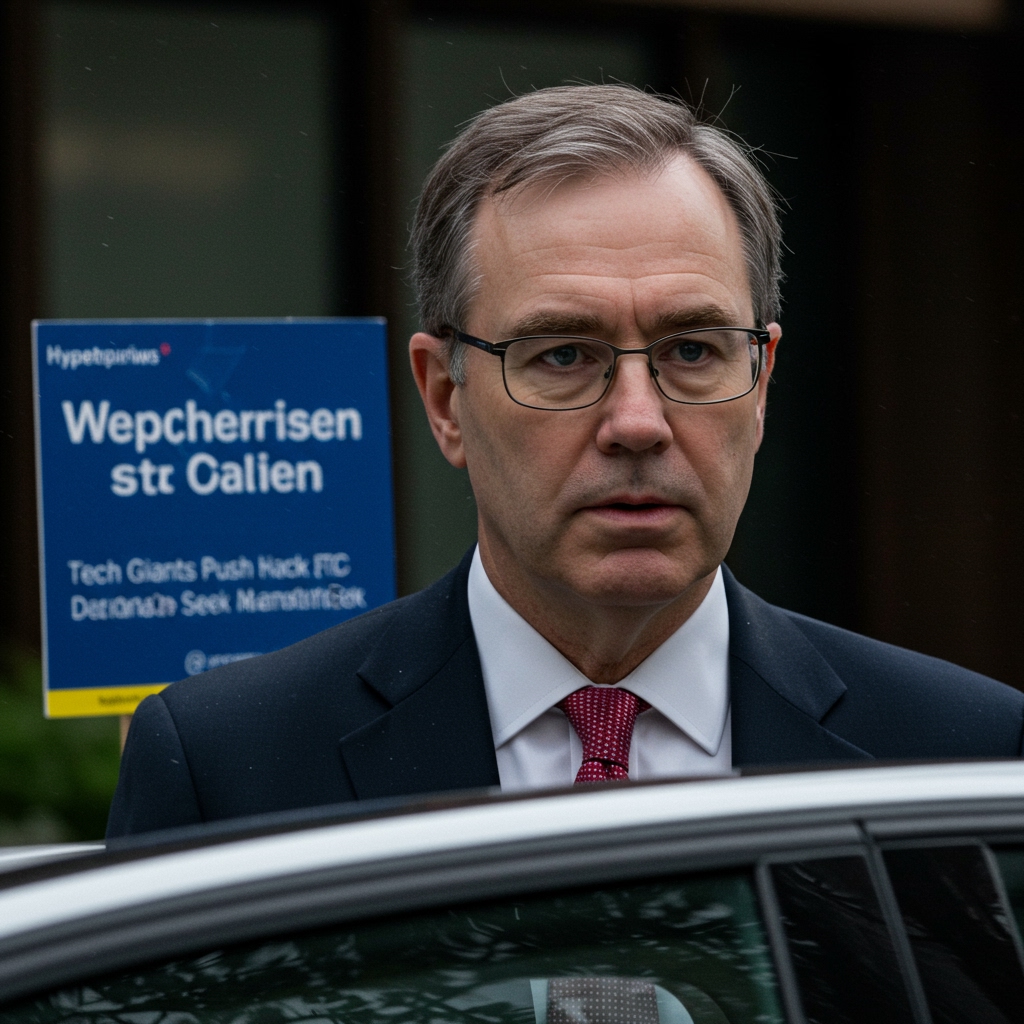Tech Industry Grapples with New FTC AI Data Transparency Rules
The artificial intelligence landscape is undergoing a significant shift following the Federal Trade Commission (FTC)‘s recent issuance of stringent transparency guidelines concerning AI training data. Released on January 10, 2025, these new directives aim to enhance public understanding and trust in AI systems by requiring greater disclosure about the datasets used to train them. The regulatory move, long anticipated by consumer advocates and policymakers alike, has prompted rapid, formal responses from major players within the technology sector, including Google, Microsoft, and Meta, among others.
Executive Concerns Over Practicalities and Innovation Pace
Executives from these prominent firms have wasted little time in voicing their initial reactions, which largely center on the practical implications of implementing the new requirements and the potential chilling effects on the pace of AI innovation. While acknowledging the fundamental goal of transparency, there are palpable concerns within boardrooms and development labs regarding how to comply with the level of detail the FTC’s guidelines appear to demand. Discussions among leadership at Google, Microsoft, and Meta have reportedly highlighted the complexity of tracing and documenting the origins of vast, often multi-sourced datasets that power their advanced AI models.
The executives’ anxieties stem partly from the sheer scale and dynamic nature of AI training data. Modern foundation models and sophisticated AI systems are typically trained on petabytes of information scraped from the internet, licensed from third parties, or generated synthetically. Implementing systems to meticulously track and report the provenance of every data point or source utilized could impose substantial technical and logistical burdens. Furthermore, there are worries that disclosing detailed information about proprietary datasets or unique data curation techniques could inadvertently reveal competitive secrets, undermining the very innovation the industry seeks to foster.
“Tech Industry Alliance” Weighs In with Unified Stance
A key voice articulating the broader industry perspective is the “Tech Industry Alliance”. This influential organization, representing a coalition of large technology entities predominantly headquartered in Silicon Valley, has issued a formal statement outlining its position. The Alliance’s statement emphasizes a dual perspective: a fundamental support for the FTC’s overarching goals of transparency and accountability in AI development, coupled with significant reservations about specific aspects of the new guidelines.
The “Tech Industry Alliance” highlighted that while the principle of transparency is sound and necessary for building consumer trust, the specific requirements for disclosing data sources could pose considerable challenges for proprietary development. Many companies within the Alliance have invested heavily in acquiring, cleaning, and structuring unique datasets that provide a competitive edge. The mandated disclosure of these sources or detailed information about their composition could potentially erode that advantage, they argue. This delicate balance between public transparency and the protection of intellectual property forms the core of the Alliance’s concerns.
Advocacy Efforts Planned in Washington, D.C.
In response to these concerns, the “Tech Industry Alliance” has publicly stated its plans to engage with the FTC and key lawmakers in Washington, D.C. The organization intends to initiate dialogues aimed at seeking clarification on the implementation details of the new guidelines. They are also preparing to advocate for clearer requirements or potentially possible amendments to the current rules.
The goal of these advocacy efforts is to work collaboratively with regulators to find a path forward that supports transparency without unduly stifling innovation or compromising proprietary information essential to their business models. The Alliance seeks to educate policymakers on the technical realities and potential economic impacts of the current guidelines, pushing for adjustments that make compliance more feasible and less detrimental to ongoing AI research and development efforts. This engagement marks the beginning of a potentially intense period of negotiation and lobbying as the industry seeks to shape the future regulatory environment for AI.
Looming Compliance Deadline and Industry Adjustments
The urgency of the situation is amplified by the anticipated Q3 2025 compliance deadline. This timeframe leaves companies with a relatively short period to understand the nuances of the new regulations, develop necessary internal processes, and implement the required reporting mechanisms.
The industry reaction underscores the significant adjustments expected in AI development strategies as companies navigate this new regulatory landscape. Firms will likely need to re-evaluate their data governance practices, invest in new tools for data lineage tracking, and potentially alter their data acquisition strategies. Legal and compliance teams within tech companies are already working closely with AI researchers and engineers to assess the impact and prepare for compliance.
The pushback from major tech firms and the collective voice of the “Tech Industry Alliance” highlight the complex interplay between innovation, regulation, and public trust in the rapidly evolving field of artificial intelligence. The coming months, leading up to the Q3 2025 deadline, will be crucial in determining how these stringent new guidelines will ultimately shape the future of AI development and deployment.





